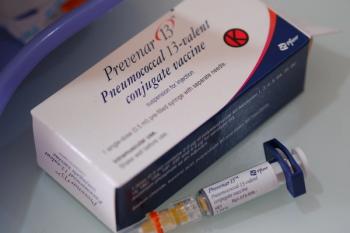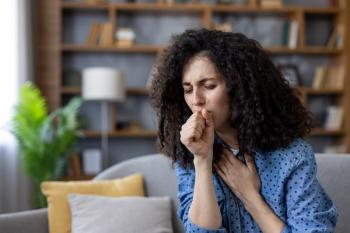
Counseling Points for Allergic Rhinitis Management
Pharmacists can guide patients to the best OTC product selections for their symptoms.
Seasonal allergies can cause a myriad of physical reactions to environmental allergens, such as eyes becoming red, puffy, itchy, and watery; a runny nose; nasal congestion; throat irritation; and mild fatigue. Common triggers include pollen from trees and flowers, pet dander, and mold. With allergy season upon us, pharmacists may encounter questions from patients about how to best manage symptoms of allergic rhinitis.
An arsenal of medications exists for symptomatic relief. In recent years, pharmaceuticals that were previously limited to prescriptions became available as over-the-counter (OTC) products, according to Kathy Campbell, PharmD, CEO, and clinical community pharmacist at DrKathy Health, LLC, and owner and CEO of Medicap Pharmacy in Owasso, Oklahoma.
When pharmacists are looking to guide patients with allergic rhinitis on which OTC medication will be best for them, their choices should be based on a patient’s goals of treatment, safety, efficacy, adherence, severity, and preferences, saidSuzanne G. Bollmeier, PharmD, FCCP, BCPS, AE-C, professor of pharmacy practice at St. Louis College of Pharmacy at University of Health Sciences and Pharmacy in St. Louis, Missouri.
According to Bollmeier, pharmacists should ask for details about a patient’s symptoms including:
- onset (eg, if symptoms are year-round or worse during a certain season), type, frequency, duration, and severity of symptoms;
- what, if anything, provokes or relieves these symptoms;
- when their symptoms first started,
- whether they or any family members have a history of asthma or allergies;
- sleep problems, such as snoring or repeated sniffling; and
- presence of an allergic salute or shiner.
An allergic salute is a crease that forms across the nose’s bridge. It is caused by repeatedly rubbing the nose upward with the palm of the hand to reduce itching or to wipe secretions. An allergic shiner is a discoloration under the lower eyelids due to vasodilation or venous congestion, Bollmeier said. Chronic mouth breathing because of nasal obstruction can cause dental and orthodontic issues. Many patients with chronic rhinitis have a decreased sense of smell or taste and may also experience ear popping and pressure due to eustachian tube dysfunction. The presence of an allergic salute or shiner, orthodontic issues, or loss of smell and taste indicates moderate to severe allergic rhinitis.
In addition, Laura A. Hart, PharmD, MS, BCPS, BCGP, health sciences assistant clinical professor, Division of Clinical Pharmacy, Skaggs School of Pharmacy and Pharmaceutical Sciences, University of California, San Diego, said it is crucial for pharmacists to ask about a patient’s underlying health conditions, medication allergies, and other medications they take to ensure a selected medication will be safe and appropriate.
Ferkhanda Najib, PharmD, pharmacy manager at Community Care RX, a long-term care pharmacy in Hempstead, New York, asks patients if they’re pregnant or breastfeeding or if they have any renal or liver impairment that may necessitate altered dosage.
Pharmacists should also ask a patient’s age, whether they have already tried any medications to relieve their symptoms, and if they are already on any medications that cause drowsiness or dehydration. In addition, it is important to find out if they’re looking to treat active symptoms or if premedication may be beneficial before coming into contact with allergens, Najib said.
Pharmacists should also consider a patient’s preference for route of administration. For example, some patients may not tolerate nasal sprays and would prefer an oral medication.
Treatment Options
Antihistamines, nasal steroids, decongestions, corticosteroids, ophthalmic antihistamines, decongestants, and eye drops are among the options for treating allergic rhinitis. Typically, they are either taken by mouth or administered topically and are used either on an as-needed basis or regularly.
Patients with intermittent allergic rhinitis have several OTC options. An OTC intranasal steroid will most likely have the greatest effect. Examples include fluticasone propionate (Flonase Allergy Relief; GlaxoSmithKline), budesonide(Rhinocort Allergy; AstraZeneca), and triamcinolone acetonide (Nasacort AQ; Sanofi). Other OTC options for seasonal allergies include intranasal cromolyn, oral and ocular antihistamines, and topical decongestants for short-term use.
Intranasal cromolyn acts to prevent an allergic reaction from happening after exposure to a trigger. “Although safe, it’s less efficacious than other therapies, has to be administered multiple times per day, and can require several weeks to be fully effective,” Bollmeier said. It is wise to reserve cromolyn for prophylaxis before exposure to a known allergen. Children and pregnant women can use it.
Antihistamines are available over the counter in both oral and ocular formulations. Bollmeier recommends second-generation oral antihistamines, which have fewer adverse effects (AEs) of sedation. Examples include desloratadine, fexofenadine, loratadine, and levocetirizine. Counsel patients with seasonal allergies to choose an OTC antihistamine if symptoms include nasal itching, rhinitis, or postnasal drip, but not congestion. Olopatadine, an ocular antihistamine/mast cell stabilizer, can be recommended in patients at least 2 years old but should be reserved for patients who exhibit only eye symptoms such as itching, redness, and drainage.
Oral and topical decongestants are also options for patients with intermittent symptoms as they can reduce congestion. Oral decongestants include phenylephrine and pseudoephedrine. Topical decongestants are advised for short-term use only.
If patients know the season their symptoms always appear, for example when a certain flower or tree blooms in the spring, encourage them to start on an anti-inflammatory (intranasal steroid or cromolyn) 1 month prior to help prevent symptom onset, Bollmeier said.
For patients with persistent or perennial allergies, intranasal steroids are most effective. This is especially true if congestion or troublesome symptoms are present. An oral antihistamine is ideal for patients with mild nasal itching.
Counseling on Adverse Effects
Each medication option for treating allergic rhinitis symptoms is associated with different AEs, so it is important to tailor counseling to the specific medication you recommend, according to Hart.
AEs associated with OTC intranasal steroids triamcinolone, fluticasone propionate, budesonide, and fluticasone furoate are typically limited to local irritation, burning, stinging, and dryness, with minor nose bleeding as the most commonly reported AE, Bollmeier said. By using the proper technique to administer nasal corticosteroid products, patients can reduce the risk for adverse reactions.
Tell patients to gently blow their nose before using a nasal spray and directly spray away from the nasal septum. Severe local effects such as septal ulceration are rarely seen but can be prevented with this technique, Bollmeier said.
First-generation antihistamines such as diphenhydramine, brompheniramine, chlorpheniramine, and clemastine can cause significant sedation, which may be desirable for aiding in sleep. However, they can also cause cognitive impairment. Second-generation antihistamines such as loratadine, fexofenadine, cetirizine, desloratadine, and levocetirizine are typically recommended because they don’t have sedation effects when taken at recommended doses, Bollmeier said. They are safe for small children and elderly patients.
Advise patients not to use topical decongestants for more than 3 days or rebound congestion can occur. “This lessens a drug’s effects, causing patients to use a drug more frequently and use more of it,” Bollmeier said. “This will perpetuate their problem and congestion will worsen.”
Avoiding Allergens
Pharmacists should recommend reducing and removing allergy instigators. Patients can get rid of seasonal pollens from the environment and body by using artificial tears or saline sinus flush, or by immediately taking off clothing and showering after being outside, Campbell said. High-quality HEPA filtration can remove environmental pollens from indoor living spaces.
To decrease exposure to pollens, Bollmeier said it is best to keep windows and doors shut even in the spring and run the air conditioner instead. “This reduces the amount of pollen that can enter a home through the air,” Bollmeier explained. Also, limit outdoor exercise and activities during high pollen count days.
Don’t allow pets in bedrooms, especially at night. Hardwood floors, frequent vacuuming, and washing sheets can reduce pet dander. If visiting a home with a pet that is a known trigger, pretreating with an antihistamine can reduce symptoms as can handwashing after touching a pet, Bollmeier said.
Noncaffeinated teas, in particular ginger, work as a natural antihistamine and can alleviate nasal congestion and headaches, Najib said. When the patient inhales the steam from the tea, it can soothe nasal passages. Acupuncture has also been used as a nonpharmacologic means to treat allergic rhinitis.
Pharmacists can also ask if a patient had skin-prick or puncture testing. These tests identify what patients are sensitive to and are helpful in educating patients about allergen avoidance, Bollmeier said.
Newsletter
Pharmacy practice is always changing. Stay ahead of the curve with the Drug Topics newsletter and get the latest drug information, industry trends, and patient care tips.















































































































